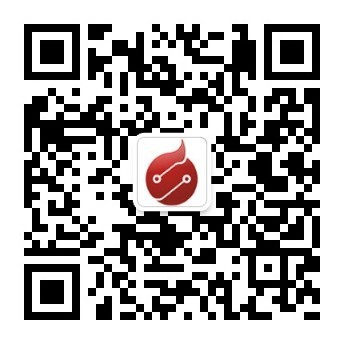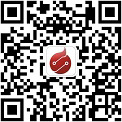'+ data.data.username +' '; dom + ='
Center focusing satellite antenna
The center-focused satellite antenna is generally called a positive-focus antenna, also known as a parabolic antenna. No matter how deep or shallow, the radius of the antenna disk surface is parabolic. The center-focus antenna is characterized by a perfect circular disk surface, and the LNB is placed at the center focus of the antenna. The position can be divided into deep and shallow dishes.If the antenna of the same size is shorter, the disk surface is deeper and the focus is longer.The disk surface is shallower.If you ask which one is more useful, it has its own advantages and disadvantages.
The positive focus antenna looks for the satellite, usually as long as you know the local receiving elevation angle of the satellite, place the elevation device in the center of the antenna to adjust the elevation, and then use the compass and the satellite signal test instrument to easily find the satellite you want. When you locate At the time of completion, the center of the disk, LNB and 36,000 kilometers of satellites are in line.
| Features | Focus | Signal gain | Anti-microwave interference | Freight loading cost |
| Deep dish | short | Slightly worse | it is good | expensive |
| Shallow dish | long | high | difference | ordinary |
FRP integrated satellite antenna
The FRP antenna is made of glass fiber, and the inner layer of the fiber is sandwiched with tin foil to reflect the satellite signal. Due to the large volume of the antenna, the manufacturing process is usually made by hand on the mold.
Because this antenna is integrally formed, it can guarantee absolute roundness and parabolic surface accuracy. It completely avoids the problem of "side lobe" or "multi-focus" caused by improper combination of combined antennas due to accuracy. Higher than the general combined antenna, the fixed antenna is especially suitable for KU frequency satellite reception that requires high gain.
The characteristics of the integrated antenna are high gain and uniform gain quality of the antenna, which is different from the combined antenna.The gain quality depends on the mood of the engineering staff. The disadvantage is: because it is integrated, it is used in transportation and high-rise operations. There is a certain degree of difficulty.
FRP antennas can be used to receive C and Ku band satellite signals, and are generally used in cable TV system, TVRO and satellite communication system related manufacturing.
Due to the ruggedness of FRP antennas, about 90% of domestic cable TV systems have used this type of antenna since the early days.
Mesh antenna
The aluminum mesh mold is formed. The accuracy of the antenna structure and curvature depends entirely on the formation of the skeleton. The combination construction of the antenna will also have a considerable impact on the alignment. Therefore, the professional combination technology of the antenna combination technician is very high.
This type of antenna is subject to the accuracy of the curvature of the antenna, so it is more commonly used in C-band satellite reception at a lower frequency.The use of the antenna is mainly based on cable TV systems, TVRO and personal reception.
Die stamping forming iron dish antenna
The iron dish antenna is the one with the highest usage rate in personal reception. It can be divided into defocused integrated molding, central focus integrated molding and central focus multi-piece combination. The iron plate integrated antenna size ranges from 35cm-180cm, and can generally be used to receive Ku Frequency band satellites, 160cm-180cm antennas can receive C-band satellites according to the power of the satellite. The integrated antenna is cheap and easy to install and the signal gain is stable. The only disadvantage is that it is more inconvenient to carry it than 100cm. The size of the multi-plate iron antenna is from 160cm- The range is 240cm, which is generally suitable for C-band satellite reception.If it is used to receive Ku frequency, the effect is not ideal.
The iron dish antenna is made of galvanized steel plate and stamped by mold, which can be mass produced, so the price is relatively cheap.
Combined SNC satellite antenna
The SNC satellite antenna is formed by using glass fiber as the raw material, plus the mold is heated, and a layer of stainless steel wire mesh is sandwiched inside to reflect the satellite signal.
The SNC antenna can be used to receive C and Ku satellite signals, but when receiving Ku frequency, special attention should be paid to whether there is a high-low drop between the plates when the antennas are combined, and whether the plates are flat, because a slight difference will cause the overall efficiency of the antenna to deteriorate.
SNC satellite antennas are usually used in cable TV systems and special communication services.
Polar axis chain antenna
Polar axis antennas are also called synchronous belt antennas. What is a synchronous belt? It is a satellite belt formed by 36,000 kilometers above the equator orbiting the earth. The synchronous satellite surrounds the earth at 2-3 degrees on the synchronous belt and the synchronous belt Why is the antenna also called a polar axis antenna? We assume that the antenna is located at any latitude in the northern hemisphere. When your antenna has been corrected so that all synchronous satellites can be received, the polar angle of the antenna is directly opposite Polaris, and the auxiliary elevation angle is relative to the earth axis. Parallel, so the synchronous belt antenna is also called polar axis antenna.
This antenna is a propulsion system composed of a group of 36V DC stepper motor driven variable speed gear sets and a chain. This system is controlled by a positioner. The locator can output the 36V required by the antenna, and can remember the satellite address found at present and in the future.When the antenna is to be moved to another satellite, just enter the satellite code, and the antenna will automatically move to this satellite. .
The installation of this system requires considerable experience in receiving, because the curvature of the synchronous belt seen at different latitudes is different, and it is related to the polar angle, azimuth angle and auxiliary elevation angle of the antenna itself. Unable to fully track the timing belt
Single push rod polar axis antenna
The function and operation setting of the single push rod polar antenna is the same as that of the chain polar antenna. The push rod antenna is a polar antenna used in the early TVRO. Today, individual receivers in Southeast Asian countries often use this type of antenna to receive 2 -3 satellites.
If a push rod is used to receive the satellites of the entire synchronous belt, the antenna will jitter, jump or jam when receiving the polar east or west satellites (at this time, the antenna is at the position of maximum load, plus the push rod The force is at the very end of the structure, so there will be insufficient force) so this system has gradually been replaced by chain-driven antennas.
Elevation azimuth drive antenna
The elevation azimuth driving antenna uses 1-2 36V elevation stepper motor push rods and a group of 36V azimuth stepping motors. When the antenna is changing the receiving satellite, the elevation and azimuth motors will be driven alternately, so the antenna will travel on a route Serrated.
The elevation azimuth antenna is not as difficult as the polar axis antenna in the initial installation and setting. At the beginning of the setting, the satellite to be received must be positioned and memorized with the movement of the elevation angle and azimuth. In the future, you only need to enter the code when changing the satellite.
Since the route traveled by this system does not completely conform to the synchronous orbit, when a new satellite sends a signal in the synchronous orbit, the system will be difficult to detect.

Follow WeChat

Download Audiophile APP

Follow the audiophile class
related suggestion

Privacy statement: Your privacy is very important to Us. Our company promises not to disclose your personal information to any external company with out your explicit permission.

Fill in more information so that we can get in touch with you faster
Privacy statement: Your privacy is very important to Us. Our company promises not to disclose your personal information to any external company with out your explicit permission.